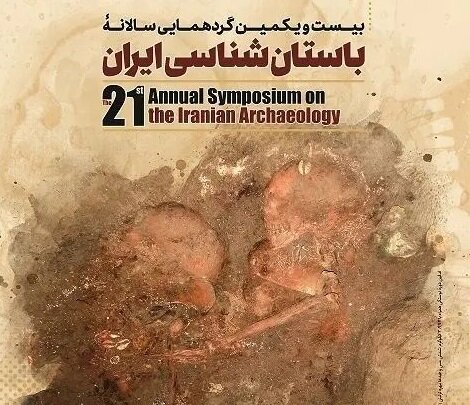National Museum to host symposium on Iranian archaeology

TEHRAN – The 21st Symposium of the Iranian Archaeology is scheduled to be held at the National Museum of Iran from March 4 to 6, gathering a host of renowned archaeologists, related officials, and enthusiasts of the field.
According to organizers, the event promises a wealth of knowledge through insightful speeches from key figures in the field including, the cultural heritage minister Ezzatollah Zarghami, Mostafa Deh-Pahlavan, the head of the Archaeology Research Institute, and Jebrael Nokandeh who presides the National Museum, to name a few.
The symposium will host a series of ten scientific conferences, each designed to shed light on the remarkable achievements.
The event is intended to serve as a platform for the exchange of ideas, fostering a deeper understanding of Iran's archaeological heritage and its significance in the broader context of history.
Iran is home to an extensive collection of archaeological sites that provide a glimpse into the rich history of the Persian civilization.
The earliest archaeological expeditions to Iran began in the mid-19th century when British and French archaeologists were studying Susa and its surroundings in southwestern Iran. One of the earliest evidence of human occupation within the Iranian plateau comes primarily from archaeological remains in caves and rock shelters that date to the Early Paleolithic, circa 45,000 BC.
These primary inhabitants lived in a very dynamic environment that required a mobile hunter-gatherer lifestyle. It was only after a few thousand years that these short-lived camps began to develop into longer-term sedentary settlements near rivers and freshwater springs. Some of the world's earliest open-air settlements are in Iran and date back around 10,000 years.
This period marks the beginning of the Neolithic revolution, characterized by the expansion of agricultural communities and increasing social complexity, with consequent innovations in material culture, in particular, the development of pottery.
Around 5000 BC, people began mining and manipulating the region's abundant metal resources, especially copper. Known as the Chalcolithic, this period lasted until around 3500 BC, when metallurgy became much more sophisticated by adding tin to produce bronze, marking the beginning of the Bronze Age.
Over the next 2,000 years, bronze technology became the primary material for the production of high-ranking weapons and ships; meanwhile, pottery continued to be refined and elaborate. Around 1500 BC, iron began to be exploited alongside bronze for weapons production, marking the transition period to the Iron Age and subsequent cities/states that began to consolidate their influence over a wider region.
Some of these regional powers are known as the Elamites, whose capital was in the southwestern city of Susa, the Babylonians and Assyrians of Mesopotamia, the Hittites of Anatolia, and the Scythians of the northern Caspian Sea. It was during this period that the first Indo-Iranians moved to the Iranian plateau from which arose the first great empire of Iran, the Medes.
AM
Leave a Comment